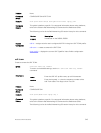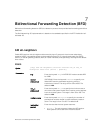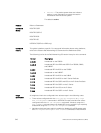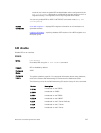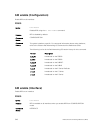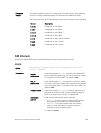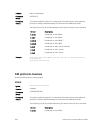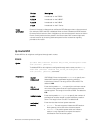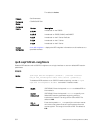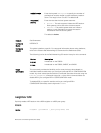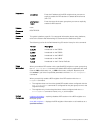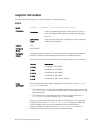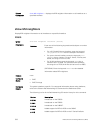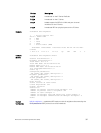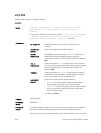Version Description
9.0.0.0 Introduced on the Z9000.
8.3.19.0 Introduced on the S4820T.
8.3.10.0 Introduced on the S4810.
7.4.1.0 Introduced on the E-Series.
Usage
Information
Protocol Liveness is a feature that notifies the BFD Manager when a client protocol
(for example, OSPF and ISIS) is disabled. When a client is disabled, all BFD sessions
for that protocol are torn down. Neighbors on the remote system receive an Admin
Down control packet and are placed in the Down state. Peer routers might take
corrective action by choosing alternative paths for the routes that originally
pointed to this router.
ip route bfd
Enable BFD for all neighbors configured through static routes.
Z9500
Syntax
ip route bfd [interval interval min_rx min_rx multiplier value
role {active | passive}]
To disable BFD for all neighbors configured through static routes, use the no ip
route bfd [interval interval min_rx min_rx multiplier value
role {active | passive}] command.
Parameters
interval
milliseconds
(OPTIONAL) Enter the keywords interval to specify non-
default BFD session parameters beginning with the
transmission interval. The range is from 50 to 1000. The
default is 100.
min_rx
milliseconds
Enter the keywords min_rx to specify the minimum rate at
which the local system receives control packets from the
remote system. The range is from 50 to 1000. The default is
100.
multiplier value Enter the keywords multiplier to specify the number of
packets that must be missed in order to declare a session
down. The range is from 3 to 50. The default is
3.
role [active |
passive]
Enter the role that the local system assumes:
• Active — The active system initiates the BFD session.
Both systems can be active for the same session.
• Passive — The passive system does not initiate a
session. It only responds to a request for session
initialization from the active system.
Bidirectional Forwarding Detection (BFD)
351



